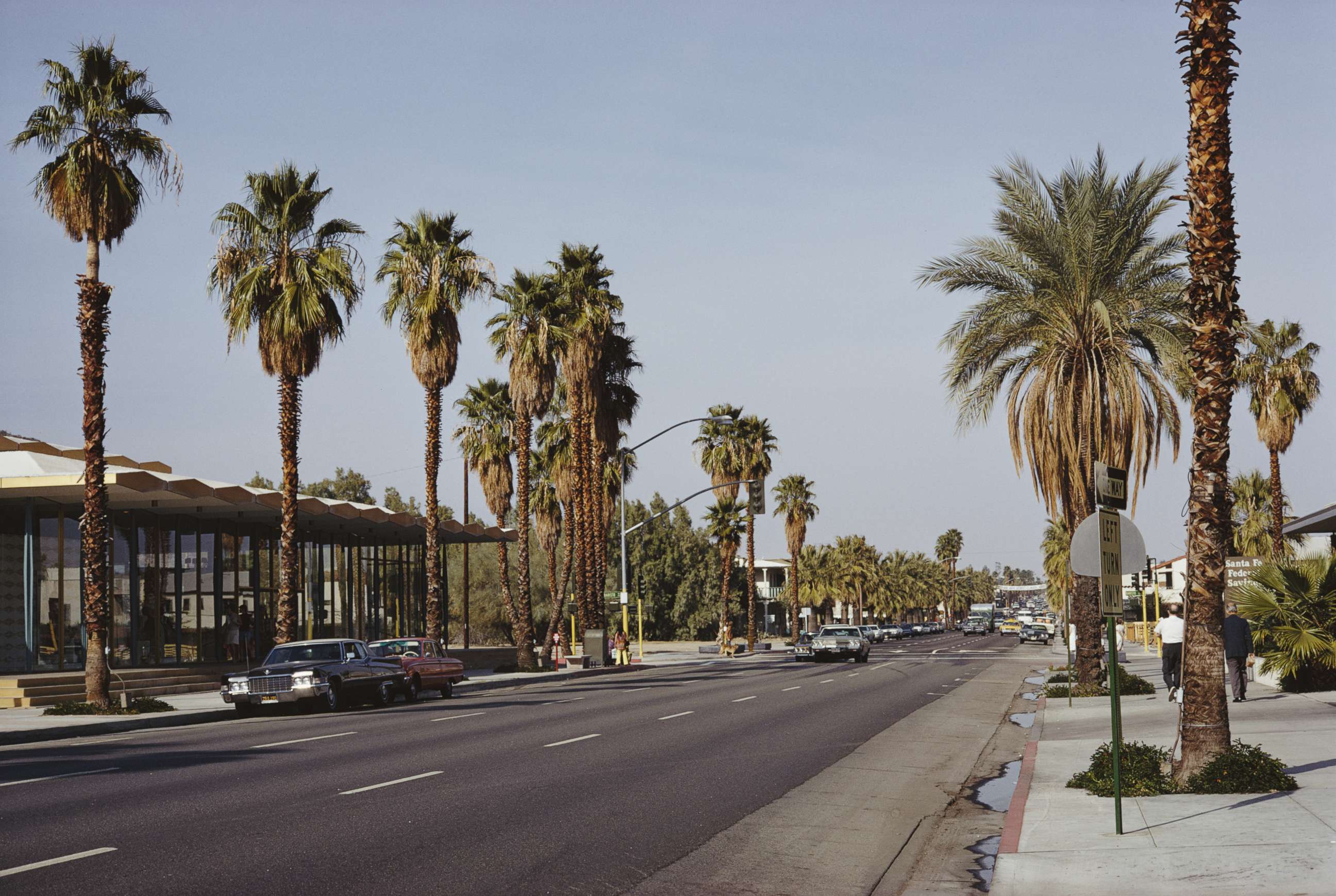Black, Mexican families forcibly evicted in '50s and '60s from Palm Springs seek restitution
Over 500 former residents and descendants are part of the claim.
Attorney Areva Martin has filed an amended claim on behalf of hundreds of Black and Mexican families against the city of Palm Springs, California, who are seeking millions of dollars in restitution for being forcibly evicted from the Section 14 neighborhood in the 1950s and 1960s, she said at a press conference on Tuesday.
Martin said the preliminary harm to the families could be upwards of $2 billion.
Pearl Devers, 72, is one of the hundreds of Black and Mexican people who were forcibly displaced in the 1950s and 1960s from a one-square-mile neighborhood known as Section 14 in Palm Springs, the primary residential area for people of color at the time.
“All I know is I went back there one day and that my house was gone. My daddy was gone and my neighbors slowly watched the neighborhood disintegrate,” Devers told ABC News.
She’s joining over 500 former residents and descendants in the claim, whose homes were bulldozed and burned down, often without notice, and are seeking restitution from the city.

In the coming days, Martin, who is also an ABC News contributor, told ABC News will be formally filing claims for restitution for these families, which she said still live with the trauma from being evicted.
Palm Springs formally apologized last year for the displacement and removed a statue of Mayor Frank Bogert, who was the mayor during that time.
"I truly apologize for those actions. They were wrong then, they are wrong now, they created devastation in our community and different outcomes for the Black community and Latino community that still exist today, and segregation that still exists today," Mayor Christy Holstege said in September 2021.
The formal apology referred to the eviction and home destruction as a “city engineered holocaust," the statement read.
In a statement to ABC News on the claim, the city said it has been working on collecting proposals for reparations program consultant services.
"The scope of work consists of reviewing and verifying the historical context of residents displaced from Section 14 and helping the City develop a reparations program to enhance the quality of life for those affected by the displacement," the statement read.
It continued, "Over the past two years, the City Council and Staff have set out on a course aimed at making right what happened during that period. While this process may seem to be taking longer than some might like, the City has an obligation, not only to those who were displaced, but also to its residents, businesses and taxpayers, to thoroughly investigate the history as it develops remedial programs that are fair to everyone."
The legal team behind the restitution effort retained Julianne Malveaux, an economist and dean of the College of Ethnic Studies at Cal State LA, to assess the economic impact of that displacement. Her preliminary harm assessment was between $400 million and $2 billion, according to Martin.
The land that made up Section 14 was owned by the Agua Caliente tribe. According to city records, the 1959 Indian Leasing Act allowed the Agua Caliente to lease their lands for up to 99 years – incentivizing the city and real estate developers to take over the land.
The city proposed that landowners terminate the leases of renters and give their tenants 30-day eviction notices, however, according to a 1968 report from the state Attorney General, homes were burned and bulldozed before eviction notices were formally issued.

Martin said the survivors not only dealt with emotional trauma but were also prevented from building the kind of generational wealth those demolished homes and businesses could have provided.
Devers said she was around 12 years old when her parents separated. Her mother wanted to move homes when she saw much of the neighborhood being razed. She said her father, who she describes as her "hero," was stubborn and stayed at the house until the city destroyed it.
She said her father was a community leader and helped start the first NAACP chapter in Palm Springs, but he was devastated by the loss and went deeper into alcoholism.
People from the neighborhood still stay in touch after all these decades, Devers said. She even married her childhood sweetheart, who died three years ago.
"It wasn’t just a house, it was a community. It was our life, it was our safe hood. It was protection," she said. "It’s just really heartbreaking just to have our neighborhood be dismantled like that, our livelihood."
Editor's Note: This story has been updated to say the lawyers representing the families are not planning to file a lawsuit, but are amending a previous claim against the city of Palm Springs, California.






